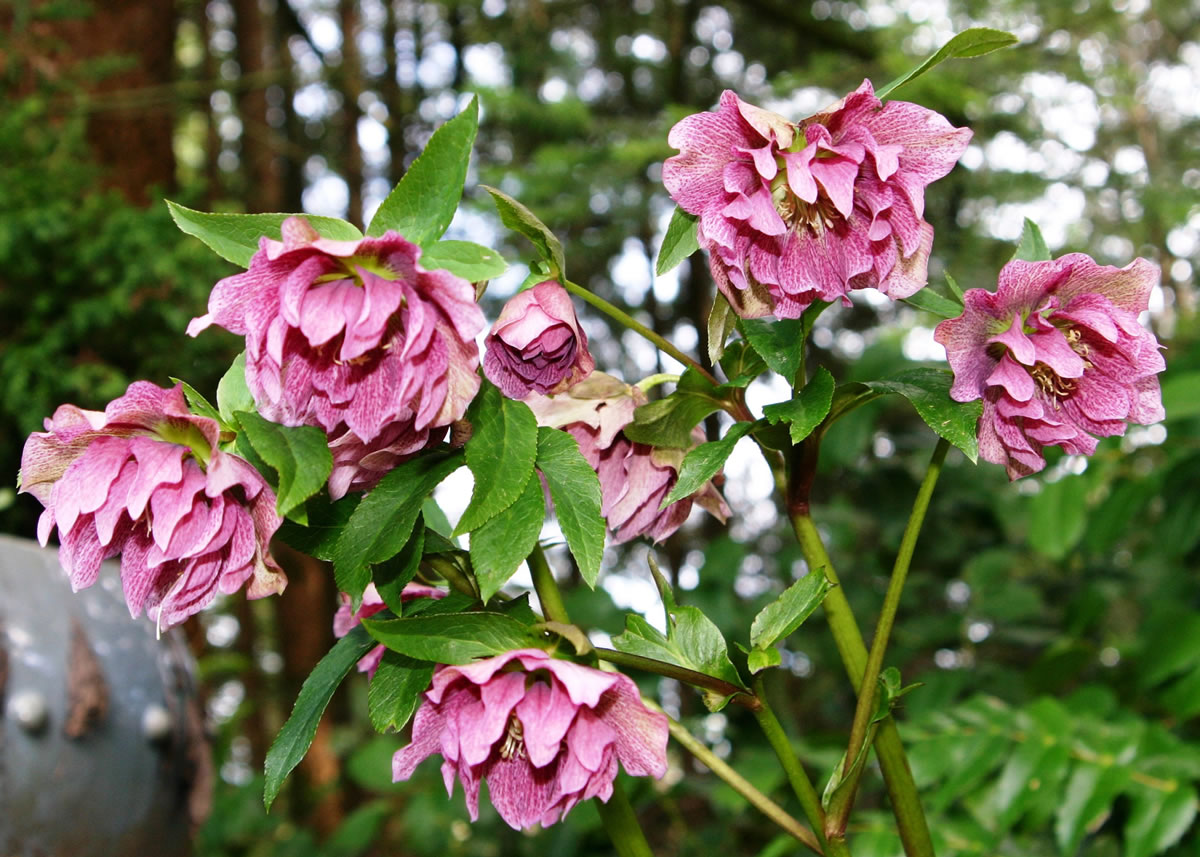I come into the month of March spellbound, once again. In February, three of the largest garden-oriented events in the Pacific Northwest drew capacity crowds by conjuring up spring from the remnants of late winter. Daffodils, tulips and alliums bloomed weeks ahead of schedule. Bare-branched cherry trees and late-season magnolias broke into full flower. Who wouldn’t be bewitched by the heady scent of Winter Daphne heralding the arrival of spring?
Fortunately, we go into these events knowing that much of what we see is not exactly real. It’s all about the creativity of gardening; understanding that imagination is one of the first steps in creating the garden of your dreams. We can appreciate the effort and ingenuity it takes to put together such a show for our enlightenment. Since the palette of plants used in the demonstration gardens are chosen for their adaptability to our weather and climate zones, we can also take a serious look at the individual plants offered and decide which ones we would like to add to our own gardens.
Many of the demonstration beds and borders featured reliable stalwarts of the Pacific Northwest garden. Even though I’ve featured many of these plants in previous columns, I still believe they are worth adding to the garden whether you’re a novice or longtime gardener. Hellebores are a perfect example. I see them
as the little black dress of the Northwest garden. Hellebores comprise a group of perennials that begin to bloom in our home gardens over the winter months and continue well into the spring season. I’m always happy to follow the charming hellebores through their long growing cycle.
Another favorite Northwest perennial that I often recommend is pulmonaria (Lungwort or Bethlehem sage). Because they are so reliable, I continue to add the latest introductions to my garden. If you don’t have any in your garden try one of the classics such as “Silver Bouquet,” “Mrs. Moon” or “Moonshine.” These will pay off in true perennial fashion. Pulmonaria bloom in dramatically bright blues and pinks, often carrying both colors on the same plant. They are serious foliage plants, known for the dappled pattern of silvery white coloration on pale green leaves. “Milky Way” (Pulmonaria saccharata) is dusted with tiny white spots like stars in the sky. “The Leopard” has larger, more evenly spaced markings.
The Mediterranean heathers in white and purple-pink are lovely if used in the right context. Their low, mat-forming profile is perfect for the edge of a border or planted on either side of a sidewalk entry. Heath and heather varieties grow in an array of forms from small, evergreen clumps to taller shrubs with flowers that dangle like ruby red bells. Many are grown for their changing foliage color as much as for their seasonal flowers. “Robert Chapman” glows fiery orange in late fall and the new growth of “Dawn” (Erica darleyensis) is golden yellow.
For a bold splash of early, voluptuous color in a flowering tree, try the ornamental flowering plum. They flower in a mass of deep pink blossoms that shout out, “Spring is here. There’s no turning back.” As if to highlight the bright flower color, new spring foliage unfurls in deep shades of purple with hints of bronze in full sunlight. The combination is striking, a natural lesson in using color contrast in the garden. Prunus cerasifera “Thundercloud” is the smallest plum, perfect along driveways and sidewalks. Prunus x blireiana is a profuse, double bloomer.
Before you know it, new spring growth will overtake the last of the winter interest plantings. Even though our sights are set on the spring season, now is a good time to take one more look back at our winter plant collection. Consider the value of transition plants such as the Paper Bark maple (Acer griseum) which adds a hopeful glint of reflected light to gray, overcast skies. Make a note of your favorite winter highlights. Take this last chance to plan and then plant for next year’s winter interest.
The spring garden shows aren’t trying to trick us into believing that we, or they, can make everything we see in the demonstration gardens actually happen at this one time of year. What they are doing is putting everything out in front of us so that we can see all the possibilities. One of the things that these shows do best is to turn us on to the plant choices that are available to gardeners in the Pacific Northwest. Even if oriental lilies won’t be flowering in our gardens in March, it’s good to keep in mind that we will plant them soon for their upcoming summer flower show.



